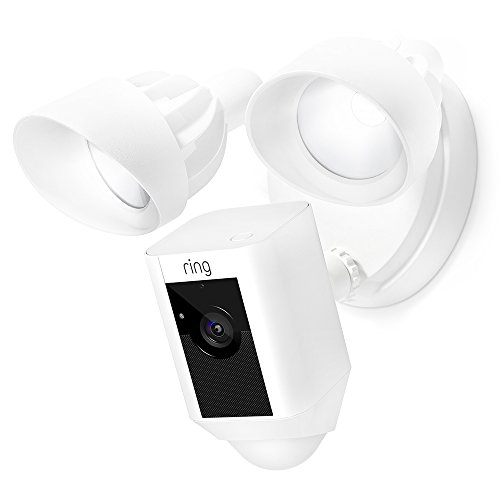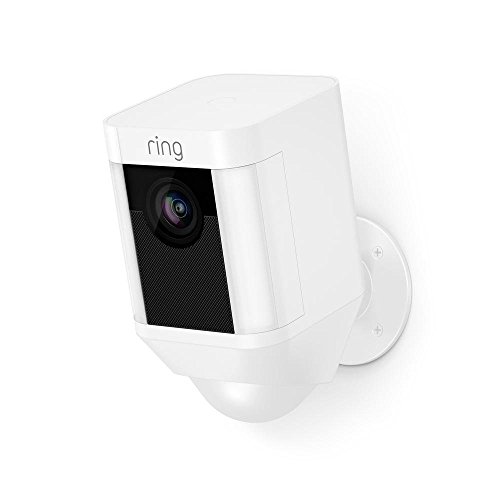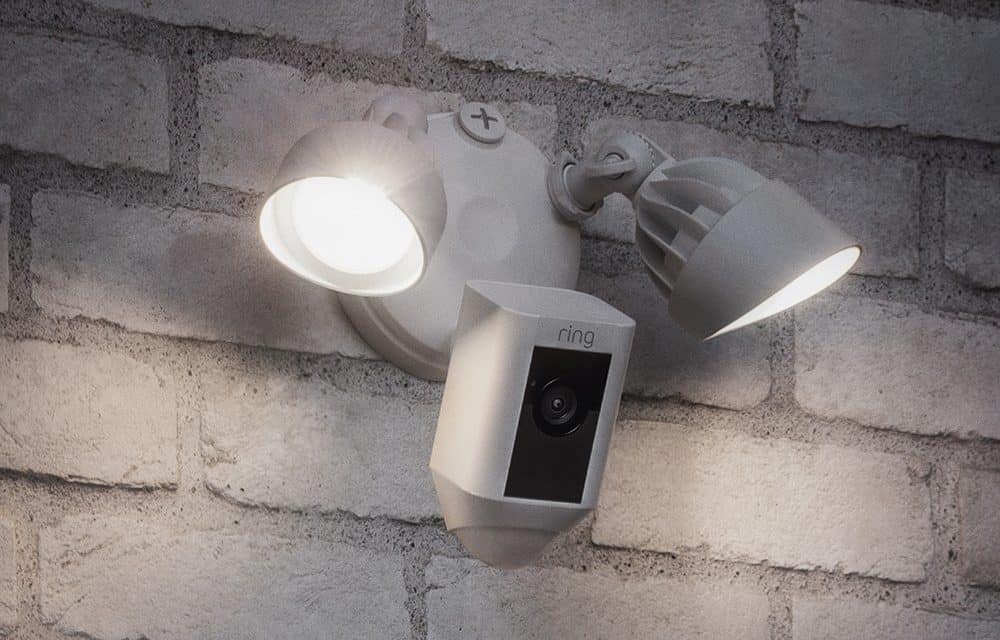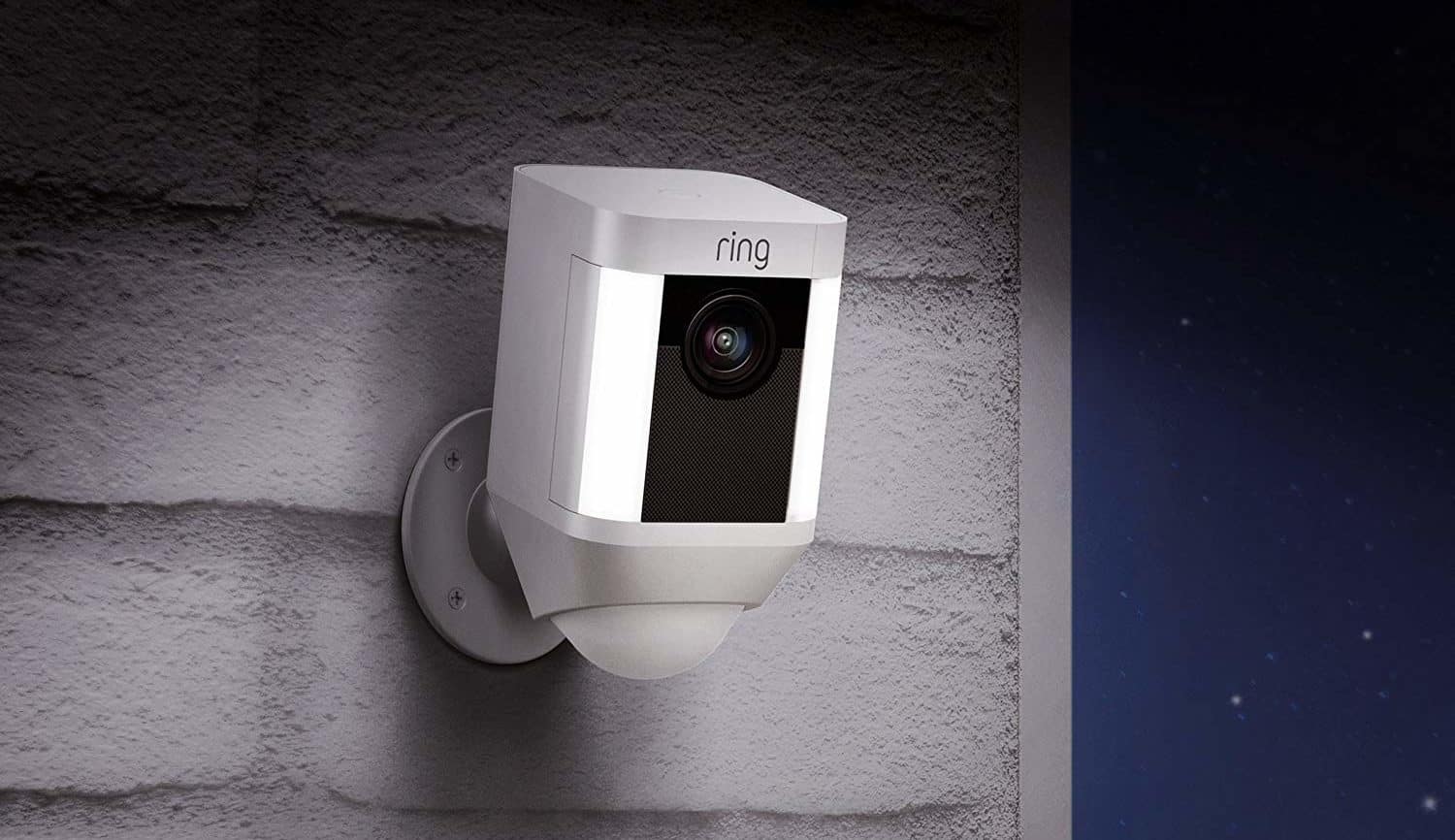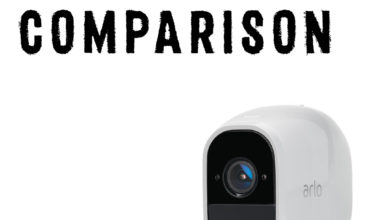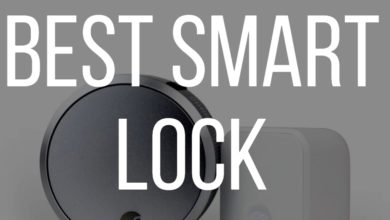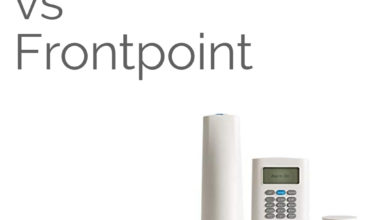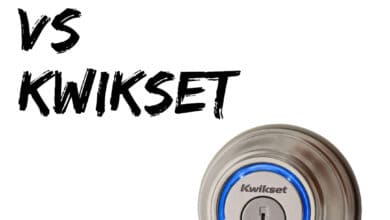Ring Floodlight vs Spotlight: Everything You Should Know
Home security systems haven’t really had a lot of attention in relation to everything else that many people have around their homes nowadays (things like voice-activated speakers or automatic lights). Apart from security lights, and the occasional front-porch alarm or speaker, home security systems have been ignored by many potential customers through fear that they might be clunky, confusing or ineffective.
That was until Ring came along. Marketing itself as a simple, straightforward, and modern home security company, Ring has developed arguably the best range of home security cameras and systems to ever hit the market. Opting for minimal and sleek installation and setup system, customers have been seriously impressed with their Ring purchases, and are often keen to recommend them.
But since the company has developed a name for itself, it’s also added more products to its range. Would you like the subtle Spotlight Cam version or the Floodlight Cam for more coverage? Do you prefer the simplicity of a wired setup or the convenience of going battery-operated? And if so, is it worth getting the solar-powered model? The good thing about Ring is that, although the choice can be hard to make, all of Ring’s models have the same camera, so that’s one thing you’re set on. But when it comes to lighting and illumination, we thought we’d run through the range and give you an idea of which is best – Ring Floodlight vs Ring Spotlight.
Related: Outdoor camera comparison: Arlo, Nest & Ring comparison
Contents
Ring Floodlight vs Spotlight
| Model | Ring Floodlight | Ring Spotlight |
|---|---|---|
| Design | 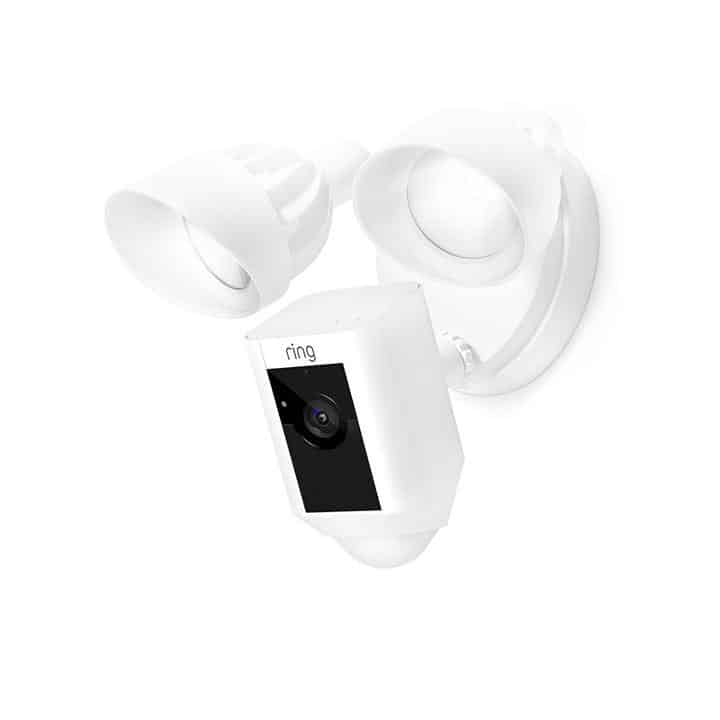 |  |
| Wired | ✔ | ✔ |
| Wireless | ✔ | |
| Live Stream | ✔ | ✔ |
| Two-Way talk | ✔ | ✔ |
| Resolution | 1080p | 1080p |
| Field of View | 140° | 140° |
| Night Vision | Color Advanced when plugged in | Color Advanced when plugged in |
| LED Brightness | 1800 lumens | 375 lumens |
| Siren on Camera | ✔ | ✔ |
| Availability | Check Price | Check Price |
Ring Floodlight

Released in 2017, the Ring Floodlight was the first smart outdoor camera from the company, including the first to use the lighting concept. A highly popular camera that rivals the best of Arlo and Nest, the Floodlight is a customer favorite and highly effective device with solid specifications. This includes 1080p resolution, a 140° FoV, color night vision and Two-Way talk feature.
Also read: Arlo Pro 3 Floodlight vs Ring Floodlight
- Connect your Ring camera with Alexa then enable...
- Lets you see, hear and speak to visitors from your...
- With a Ring Protect Plan (subscription sold...
Ring Spotlight

The Ring Spotlight was released in early 2019, as a very similar smart camera to the Floodlight. In regards to specs, it shares the same HD resolution, field of vision, color night vision and the crucial Two-Way talk feature. The critical differences are that the Spotlight can be wireless, but is less bright than the Floodlight camera.
Also Read: Arlo Pro 3 vs Ultra
The Similarities
The Ring Floodlight and Spotlight share very many similarities when it comes to their specifications and features, as this section will show.
1. Live View
All Ring cameras allow you to watch live and on-demand. For an extra $3 a month, you can record this live footage too.
2. Video
As mentioned above, all Ring’s products operate using the same camera, so the image quality they all offer is exceptional – including the versions that feature the Spotlight and Floodlight cams. Video footage is captured in 1080p full HD at a solid 30 FPS – combined with a 140-degree viewing field, this means that nothing will avoid being captured. And for those super-technical people, both of these camera record footage in H.264 – this reduced strain on processing power allows most homes to have up to 4 cameras running at once.
3. Audio
Two-way audio means just what it suggests – you can listen to the audio being recorded, but also output audio too. This means that, through the app on your phone, you can communicate with people at your door whilst you’re away from home, or even scare off or deter potential thieves. It’s a rare tool to use, but it does come in handy.
4. Siren
Sirens are surprisingly handy when it comes to home security, acting as both deterrents for potential burglars or vandals, but also as a way to alert those in the home. Both of these Ring cameras alert your family to potential danger and can scare off any intruders. Both Ring cameras contain a siren that can reach up to 110 dB, definitely loud enough to alert of deterring, and can also be integrated with the new Ring alarm systems.
5. Wi-Fi
The Ring Floodlight and the Ring Spotlight are both Wi-Fi enabled.
6.Cloud Storage
Ring also offers a cloud storage service for you to store your valuable footage in a secure server. This, however, does cost a little extra. There are two plans – Basic for $3 a month, and Plus for $10 a month. Basic allows you to record footage from one camera and store it for up to 60 days, to review or share whenever suits you. Plus offers the same, but for as many security cameras as you wish, so is more suited for those with multiple Ring cameras in their home. It’s worth noting that there’s no �local storage’ option available, so if your Internet drops this cloud storage will encounter issues.
7. Amazon Alexa
It takes many people by surprise that Amazon actually bought Ring a while back, and are now the owners of the company and their products. Because of this, they’ve made efforts to integrate Amazon Alexa with Ring’s devices, and both the Ring Spotlight and Ring Floodlight now work with Amazon Alexa. Some Amazon devices – such as the Echo Spot or Echo Show – can actually display the live feed from the camera, but two-way audio is limited when doing this.
8. Support
Through the Ring app (available for Android or iOS), as long as you have a steady Internet connection, you can view your recordings, or watch your camera live, from anywhere else in the world.
9. IFTTT and Stringify
Ring cameras are also compatible with both Stringify and IFTTT. For those who don’t know what these are, they’re security trigger systems that allow your devices to communicate with each other and therefore make use of other features such as motion detection and auto-lighting.
- Connect your Ring camera with Alexa then enable...
- Lets you see, hear and speak to visitors from your...
- Powered by the quick-release rechargeable battery pack.
The Differences
Here are the main differences between the Ring Spotlight and Floodlight cameras.
Read: Nest IQ vs Nest Cam Outdoor
1. Night Vision
As mentioned before, the Ring Spotlight and Ring Floodlight have the exact same camera, and therefore offer the same quality of footage in both the day time and at night. It’s worth noting, though, that enhanced night vision, offering full color, is only available when either device is connected to mains, wired power. Running either device from battery power will only offer black and white nighttime footage.
2. Power Options
Despite their many similarities, the Ring Spotlight and Ring Floodlight also have quite a few differences, where in some fields, one is quite clearly more advanced or developed than the other. One of the key differences are the power options available for both devices.
The Ring Spotlight can be powered via mains or battery, where the Ring Floodlight can only be powered via wired, mains power. Because of this, the Spotlight definitely offers more versatility in this area, as users can install their camera anywhere in their home, and if there’s no nearby power outlet, they can enjoy up to 6 months of power from a single charge of the battery. And for those who buy a Ring Solar Panel too, they can power their Ring Spotlight for an unlimited amount of time.
The Ring Floodlight is limited to wired, mains power, and as such has more restrictions on where it can be placed. It should be said that the mains power – for both the Ring Spotlight and Ring Floodlight – is the more consistent, reliable power source, but for those who want complete flexibility, the Ring Spotlight definitely offers more.
3. Motion Detection
Motion detection is a key part of any home security system and is often overlooked by many customers through their assumption that they won’t need it. As for Ring’s product line, there are two kinds of motion detection available depending on which model you go with – Standard and Advanced.
Standard motion detection makes use of infrared sensors, and is integrated into all of Ring’s battery-powered devices. This detects movement by using heat sensors, and notifies the device when it has picked up on some. It is able to ignore small animals, but larger animals can trigger a false detection. and is ideal for battery-powered devices, as it doesn’t utilize too much power.
Advanced motion detection is only available for wired devices, as it detects motion in the video footage itself. Using face and body analysis technology, it’s able to recognize and pick up humans and their movement, but can also manage to ignore busy streets or irrelevant behavior. Because of how advanced it is, it requires more power to maintain.
When either of these motion detectors has sensed something, they’ll trigger a light and provide a better view for themselves in order to determine what the disturbance was. This also works to warn or deter thieves early on. Despite the Ring Floodlight’s restrictions when it comes to battery power, being wire-powered only means it’ll always have access to Advanced motion detection, for a better level of security.
4. Digital Zoom
Digital zoom is another aspect of home security cameras that many customers fail to pay attention to. Despite all of Ring’s camera offering excellent video quality, with crisp and clear images, the addition of digital zoom can provide you with an additional element of monitoring. Both the Ring Spotlight and the Ring Floodlight have night vision included, only the Ring Floodlight offers digital zoom, allowing you to have better detail when most needed.
5. LED Lights
One of the key reasons for the success of these two particular Ring security cameras is the fact that they include on-camera lighting for added surveillance (hence this whole Ring Floodlight vs Ring Spotlight debate in the first place). Both the Right Floodlight and Ring Spotlight do a decent job of illuminating your yard or front porch, but it must be said that the Ring Floodlight offers a much brighter light, with a whopping 1,800 lumens, vs the Ring Spotlight’s 375 lumens (or 300 if running from batteries.) It’s clear, then, that the Ring Floodlight is much better in this aspect as if offers a much brighter lighting system, and therefore much better monitoring in dark conditions.
6. Temperature
Another minor element that customers often ignore the importance of – operating temperature can be the difference between your camera working when you need it most, or not. All of Ring’s cameras are weatherproof and are therefore suitable for a varying range of climates and temperatures. It’s worth noting that the Ring Spotlight, when battery-powered, may encounter some issues in cold regions, as lower as -5 degrees Fahrenheit and the camera may not work at all. For those who live in colder areas, or occasionally experience extreme drops in temperature, you’ll most likely be better off with the wired version of the Ring Spotlight, or the Ring Floodlight.
7.Accessories
As is to be expected, both the Ring Spotlight and the Right Floodlight come with a range of compatible accessories – some are basics that are fairly essential, whereas others provide an element of personalization depending on what your preferences and requirements are. The most popular of these is the Ring Solar Panel, allowing any battery-powered ring devices to run continuously without the need to recharge. This is extremely convenient, as it’ll prevent you from having to recharge your batteries at times, and save you hassle and effort.
8. Power Supply
This is the decision that most customers seem to struggle with – going with the convenience of a wireless camera vs opting for the reliability and consistency of a wired model. The first decision to make is how or where you would like your camera mounted, as if this is out of reach from a power outlet or supply, you may be forced to opt for a battery-powered machine.
You could, of course, have a professional install or extend existing cabling, but this will significantly add to the total cost of installation. Opting for the Ring Spotlight means you can take advantage of its battery power – that lasts up to six months on a single charge – and allows you to install it anywhere you see fit, as no wiring is required at all. Provided you have Wi-Fi within range of the camera, there are no limitations to where it can be located. Charging is a bit of a hassle, but it isn’t too difficult, and usually only takes a few hours – a small price to pay for the added convenience.
9. Design

Home security systems are there for practical and logistical reasons, and that’s why people rarely let aesthetics have much of an impact on the model or device they choose. Having said that, for those few who are concerned by this, it’s worth noting that the Ring Spotlight and the Ring Floodlight have fairly different appearances. Where the Ring Spotlight hosts a more sleek, crisp and clean appearance, with the entire system shaped into one device, the Ring Floodlight resembles floodlights themselves, and looks a little clumsier because of this. As mentioned, it’s best to ignore how they look, as home security cameras weren’t made to look good, but if this is a concern of yours, the Spotlight probably looks the best.

10. Prices
The Ring Floodlight is the cheapest of the two cameras, costing around the $200 mark, depending on where you purchase it from. The Ring Spotlight’s price is quite a bit higher, at around $350 (or a litter higher or lower depending on whether you go for the wired or battery-powered version).
As for cloud storage subscriptions, the Basic Plan costs $3 a month per camera, or $30 for the year (a $6 bulk discount). This includes 60 days of storage, for you to access and share your footage whenever suits you.
The Plus Plan costs just $10 a month or $100 for the year (a $20 bulk discount), and includes the same features, but for an unlimited number of cameras. The Plus Plan also includes an extended warranty, as well as professional monitoring. Both plans are flexible, requiring no contracts or locked-in agreements.
Ring Floodlight vs Spotlight FAQs
For those familiar with home security systems, but not Ring’s products in particular, or those who are new to home security systems, there are quite a lot of questions that come up. Here area few of the most common questions.
What is two-way communication audio?
Two-way communication refers to the ability to, not only hear the audio coming into the security camera, but also output audio, and essentially �reply’ to anyone at your door.
With Ring’s products, you can use the app to talk into your cell phone, to have the audio outputted from the camera. This is good for talking to friends at your door, or for deterring or warning potential burglars.
Do these devices come with an alarm?
Both the Ring Spotlight and the Ring Floodlight are fitted with alarms, reaching up to 110 decibels. For those who don’t know, this is loud enough to deter burglars, as well as being loud enough to warn family members in the house of some kind of intrusion.
How much time do the light bulbs last?
Ring home alarm systems are fitted with LED lights that have an expected lifespan of at least 10 years – but of course, this varies depending on their location, usage, and even amount of nighttime where you live. For the average person, they’re expected to last around 15 years.
Final Word
It’s clear from their impressive camera quality, consistency, reputation, and their range of additional features, that both the Ring Floodlight and Ring Spotlight are competent camera – neither is likely to disappoint. But where the Ring Spotlight has the option of battery power, with a better aesthetic, the Ring Floodlight is the more reliable model, with better night vision, and a higher lumen rating when emitting lights, for surveillance or warning.
- Connect your Ring camera with Alexa then enable...
- Lets you see, hear and speak to visitors from your...
- Powered by the quick-release rechargeable battery pack.
FAQ
In this section, we will answer the most common questions about the Ring Floodlight, Ring Spotlight, and their comparison.
What is the difference between the Ring Spotlight and Floodlight?
These two very similar cameras have some subtle differences as we have outlined in this comparison article. The principal differences are that the Ring Spotlight has a wireless option. However, when plugged in both of these cameras are much better. Another major difference is that the Ring Floodlight has a more powerful LED that is 1800 lumens, compared to the Spotlight which is 375 lumens.
How bright is the Ring Spotlight?
The Ring Spotlight is 375 lumens, which is a good enough amount to do the job of brightening up an area and making a trespasser aware that they are being watched.
Are Ring Floodlight and Spotlight bulbs replaceable?
No, each of these devices bulbs are not replaceable as they are permanent fixtures in the camera.
Are the Ring Floodlight and Spotlight waterproof?
Each of these cameras is well enough designed to be able to deal with a reasonable amount of water and suit most weather scenarios. They will struggle in more extreme weather conditions though,
Does Ring work without a subscription?
Ring cameras can operate without any subscription fees. This includes getting live notifications, accessing the camera in the app and two-way audio. However, to store and access video footage on the cloud, which is highly recommended, requires a paid subscription.
Do the Ring Floodlight and Spotlight work without WiFi?
It is technically possible but to get the most out of these devices you will want to have a solid WiFi connection which they can connect to. This will allow you to access all the best features and improve the reliability of the camera working.

